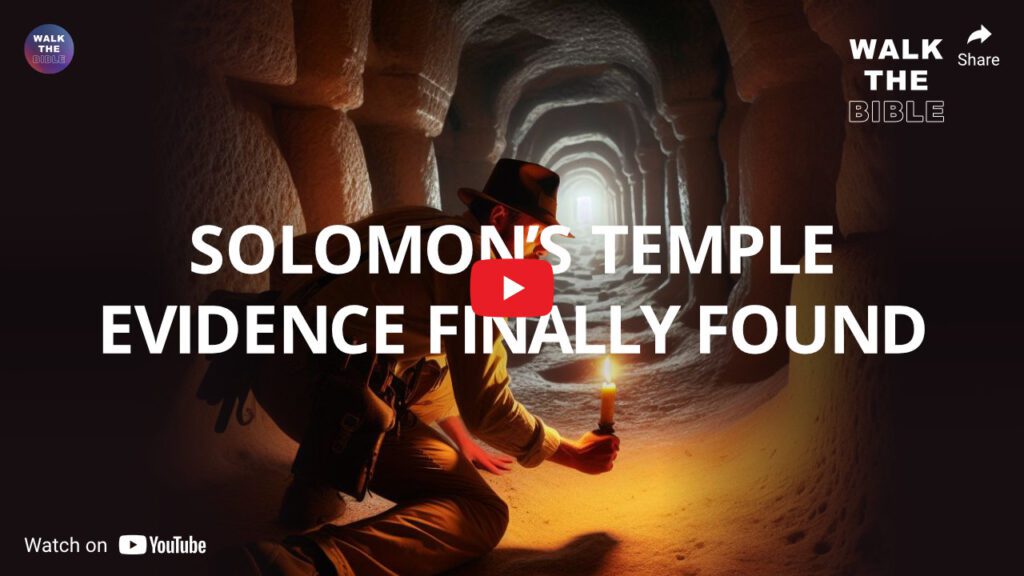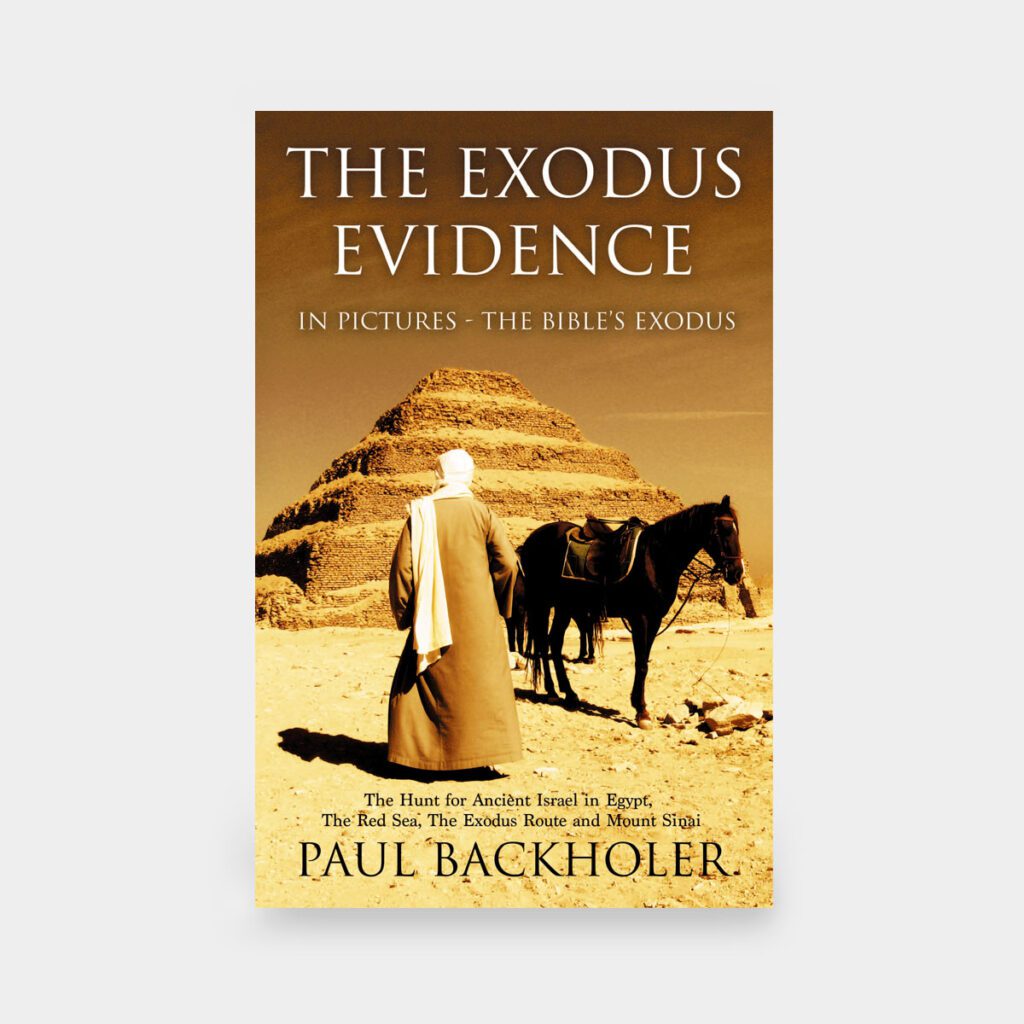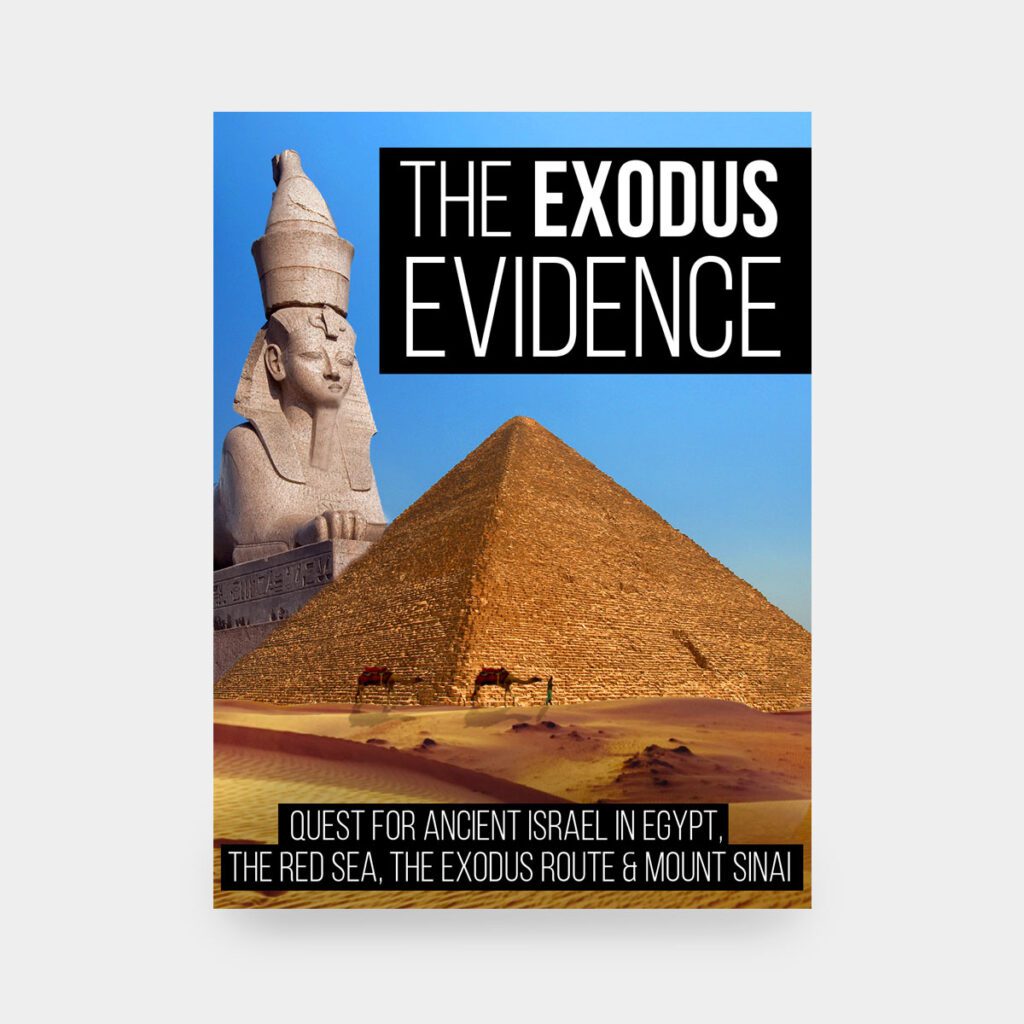
Evidence for Solomon’s Temple – Ten Finds in Biblical Archaeology
Biblical archaeology provides us with plenty of evidence that Solomon’s Temple existed. Discover the top ten great finds of biblical archaeology to prove that the First Temple in Jerusalem, built by Solomon and prepared by King David, once stood on the Temple Mount in Jerusalem, Israel. Watch the second episode of Walk the Bible and discover the shocking evidence that the Bible is history.
Walk the Bible, Episode 2
Solomon’s Temple, The Evidence Documentary

Don’t forget to subscribe, like & comment @walkthebible on YouTube.
10. The Ain Dara Temple, Syria, a Sister to Solomon’s Temple?
The Ain Dara Temple and Solomon’s Temple share at least thirty decorative and architectural elements. The description, size, plan and decorations parallel Solomon’s Temple. Both were built on a high platform, with a tripartite plan. Both have a porch with two columns, a main sanctuary, and the holy of holies. On both sides of the two temples were chambers for priests and storage areas. Both have mystical creatures, the cherubim. This temple in Syria is older than Solomon’s, so the Phoenician craftsman who helped design Solomon’s Temple would have drawn inspiration from other temples, like this one that already existed. We also have the Bible’s descriptions, Josephus’ and ancient Jewish descriptions of Solomon’s Temple to help us understand it.
On the walls all around the temple, in both the inner and outer rooms, he carved cherubim, palm trees and open flowers
– 1 Kings 6:29
The claim that Solomon’s Temple was too lavish to be built by ancient Israel has been debunked by the evidence. From the ancient Israelite Motza Temple, to the Ain Dara Temple, to the Temple of Yahweh on Elephantine Island, there is evidence. As we sailed on the River Nile many years ago, we learnt that the Temple of Yahweh on Elephantine Island, in Egypt, became a centre for Jewish religious life and priestly ministry. Therefore, the Israelites had everything they required to build a Temple like the one described in Solomon’s time.
Almost all scholars agree that a Jewish Temple stood on the Temple Mount by the 6th century before Christ, but they continue to debate when it was first constructed
9. The Cherubim and the Ark of the Covenant
King Solomon’s Temple was covered with cherubim which possessed crucial significance leading back to the Garden of Eden, in the Book of Genesis, when the cherubim were sent by God to guard the path to paradise. The cherubim were also seen on the Ark of the Covenant and they are identified in the Book of Ezekiel and the Book of Revelation. In a mystical way, Solomon’s Temple represents a path back into God’s presence in the holy of holies.
In other cultures, the cherubim are known as the Lamassu and there are many depictions of winged creatures found on items in museums all over the world. The figure of a lion also found in biblical days represents royal majesty and Christ, is the Lion of the Tribe of Judah.
Inside Solomon’s Temple was the Ark of the Covenant, it was a golden chest carried on poles and many other cultures embraced this sacred idea. There is a basalt relief in the Bible Lands Museum from Arslan Tash, Syria, dating from 2,800 years ago which shows two priests carrying scared buckets and their ‘ark of the covenant.’ But the Bible’s Ark of the Covenant had poles on the bottom, not on the top like this basalt relief.
Pharaoh Tutankhamen’s treasure also included a sacred box, covered in gold and carried on poles like the Bible’s Ark of the Covenant. Therefore, Moses would have known how other cultures treasured sacred boxes, such as the Ark of the Covenant.
8. The First Temple’s Western Wall
Mount Moriah in Jerusalem was formerly a hill with a threshing floor and rocky finish. To set a temple there, King Solomon had to flatten the top, creating a platform and he did this by building retaining walls around the top and filling it in. King Herod also did the same when he expanded the Temple Platform. Therefore, the Western Wall and its underground stones to the north of the Temple Mount are retaining walls, not part of the temple itself.
According to ancient Jewish sources, Solomon’s Temple platform measured 500 cubits by 500 cubits and if you measure 500 biblical cubits (20.67 inches long each) from the Eastern Wall, in Jerusalem (which has never moved position because of the Kidron Valley), you will find the original Solomonic Western Wall or retaining wall. Therefore, Solomon’s Temple Platform can still be traced today in the monumental stones on the Temple Mount in Jerusalem, Israel.
7. First Temple Stones (Eastern Wall)
When King Herod extended the Temple Mount Platform, he used large finely cut stones that can still be seen in Jerusalem. Dr Leen Ritmeyer, is an archaeological architect who has researched the Temple Mount for over thirty years, and he served as the chief architect of the Temple Mount, and for many other excavations in the Old City of Jerusalem and in the Holy Land. As an expert on the Temple Mount, he identified at least four different types of stone bosses, or finishes, on the Temple Mount stones which help us find the stones from the various periods in biblical history. On the Eastern Wall of the Temple Mount, Dr Ritmeyer found ancient stones dating back to the First Temple Period, perhaps back to the time of King Solomon himself.
6. The Ancient Golden Gate
In 1969, Dr James Fleming, an archaeologist was in Jerusalem when he fell through a hole in front of the Golden Gate and underneath he found an ancient gate. But no one knew what he found. Was it the original Golden Gate that Solomon made or was it from the time of King Herod, perhaps a stairway that led up to Herod’s Temple? Examining the photo he took of the underground structure, some thought it was from Herod’s time, others believed it was older from ancient biblical days.
This ancient structure under the Golden Gate proves that underneath the modern walls of Jerusalem from the 16th century, there are ancient stones and buildings from earlier biblical times.
5. First Temple Gate House
In front of the Temple Mount, where Solomon’s Temple stood, an archaeologist, Dr Eilat Mazar, found an ancient gate house that guarded the path to something sacred on Mount Moriah. The team found an ancient defensive wall from the time of King Solomon, which was six meters thick and seventy meters long. This was part of a significant defensive complex that includes the gate house, a guard tower and other ancient buildings from Bible days. Why did they construct it here? This structure secures the entrance going up to the First Temple of Jerusalem, built by King Solomon.
Solomon finished building his palace and the temple of the Lord, and the wall around Jerusalem
– 1 Kings 3:1
4. First Temple Discoveries
The Temple Mount Sifting Project recovered ancient artefacts dating from the First Temple period which included items from 2,800 years ago, such as ancient seals with Hebrew names, stone weights for items for priestly use. Also they found other items probably used by temple priests, fragments of pottery bases, bowls, parts of storage jars and animal bones. So far, these artefacts provide the first physical evidence of religious activity on the Temple Mount.
These items were extremely damaged by the bulldozers working illegally on the Temple Mount in Jerusalem, but as excavations are forbidden by the Muslim authorities, these sacred items were rescued from the ‘rubbish’ which was thrown away.
There are also some disputed items pertaining to the First Temple Period, such as an ivory pomegranate inscribed with the phrase, ‘Belonging to the Hou[se of Yahwe]h, holy to the priests.’ Some experts say it’s a forgery, others that it’s authentic. If it is from Bible days, it may have adorned the High Priest’s sceptre in the holy of holies.
3. The Windows and Doors of Solomon’s Temple
Nobody comprehended what the design for the door and window frames looked like in Solomon’s Temple because the Bible’s description was hard to understand or translate, until a carved stone box was found at Khirbet Qeiyafa in 2011, with three or four recesses, or interlocking frames. Dating to the time of King Solomon, the item appears to represent an architectural model for a building from 3,000 years ago. This ancient model aids us to comprehend what the First Temple in Jerusalem looked like.
And there were windows in three rows, and light was against light in three ranks. And all the doors and posts were square, with the windows: and light was against light in three ranks
– 1 Kings 7:4-5
2. Pharaoh Shishak’s Invasion of Solomon’s Temple
It was a source of acute embarrassment that God’s holy Temple was sacked shortly after Solomon’s death. This event is documented in the Bible and in Egyptian history. When we visited the Temple of Karnack many years ago, we realised that the Egyptian account of this event acts like a map revealing the route this pharaoh took to invade ancient Israel. The map demonstrates that Pharaoh Shishak did go to Jerusalem and a few remains of his invasion exist, for example in Megiddo, Israel.
Shishak king of Egypt came up against Jerusalem, and took away the treasures of the House of the Lord and the treasures of the king’s house; he took everything. He also carried away the gold shields which Solomon had made
– 2 Chronicles 12:9
1. The House of Yahweh Ostracon
The Arad Ostracon, number 18, mentions a man who ’is staying in the House of Yahweh.’ Two experts, Philip J. King and Lawrence E. Stager remind us that Temple at Arad was demolished one hundred years before this was written, therefore, it must be a reference to the Temple in Jerusalem. Dating to 2,600 years ago, this is the first reference we have to the First Temple of Jerusalem from a non-biblical source. This is what it says:
To my lord Eliashib:
The House of Yahweh, Arad Ostracon, Number 18
May YHWH inquire after your well-being.
And now, give to Shemariah a measure (of flour), and to the Kerosite you will give a measure (of flour). And concerning the matter about which you commanded me, it is well.
He is staying in the house of YHWH.
By Paul Backholer. Find out about Paul’s books here.
Don’t forget to Subscribe to Walk the Bible on YouTube & follow us on social media @walkthebible to keep up-to-date with the latest episodes from ByFaith TV.
Sources and Notes
Ain Dara Temple and Others
- https://www.biblicalarchaeology.org/daily/biblical-sites-places/biblical-archaeology-sites/searching-for-the-temple-of-king-solomon/
- https://thecompletepilgrim.com/elephantine-temple/
- https://www.asor.org/anetoday/2016/10/05/multi-dimensional-yahwism/
- https://www.bible.ca/manuscripts/bible-manuscripts-archeology-Elephantine-papyrus-Egypt-Aswan-Syene-Darius-persian-Jewish-colony-temple-burned-Bagohi-Sanballat-passover-wine-fortress-Ezek29-10-495-399BC.htm
The Cherubim
- https://www.thetorah.com/article/what-kind-of-creatures-are-the-cherubim
- https://www.oxfordbibliographies.com/display/document/obo-9780195393361/obo-9780195393361-0260.xml
- https://evangelicalfocus.com/archaeological-perspectives/4398/understanding-the-biblical-cherubim-in-their-near-eastern-context
Ark of the Covenant
Dr Leen Ritmeyer, Archaeological Architect and Illustrator
- https://www.ritmeyer.com/
- https://biblearchaeologyreport.com/2020/12/04/discussions-with-the-diggers-dr-leen-ritmeyer/
- https://www.latimes.com/archives/la-xpm-1996-01-06-me-21736-story.html
- https://www.baptistpress.com/resource-library/news/nobts-dutch-archeologist-recounts-discovery-of-solomons-temple/
Solomon’s Gatehouse
- https://armstronginstitute.org/347-exploring-the-hidden-gate-of-king-solomons-jerusalem
- https://armstronginstitute.org/811-jerusalems-forgotten-gate
Temple Mount First Temple Period Discoveries
- https://web.archive.org/web/20130925030435/
- http://www.archaeology.org.il/news40.html
- https://www.timesofisrael.com/archaeologists-reveal-first-solomons-temple-era-artifacts-ever-found-on-temple-mount/
House of YHWH and other Evidence
Solomon’s Temple
- https://madainproject.com/temple_of_solomon
- https://www.discovermagazine.com/planet-earth/was-king-solomons-temple-a-real-place
- https://www.nationalgeographic.com/history/article/100226-king-solomon-wall-jerusalem-bible
- https://biblicalstudies.org.uk/article_solomon_millard.html
- https://penelope.uchicago.edu/josephus/ant-8.html#
King David Great Builder
The Milo, Jerusalem
3000 Year Old Seal Found Temple Mount
Ancient Golden Gate
- https://library.biblicalarchaeology.org/article/the-undiscovered-gate-beneath-jerusalems-golden-gate/
- https://library.biblicalarchaeology.org/auth/james-fleming/
- https://www.ritmeyer.com/2019/03/11/the-golden-gate-of-the-temple-mount-in-jerusalem/comment-page-1/
Temple Mount Sifting Project
- https://www.biblicalarchaeology.org/daily/biblical-sites-places/temple-at-jerusalem/temple-mount-sifting-project/
- https://templemount.wordpress.com/brief-introduction-to-the-project/
Ivory Pomegranate
- https://www.biblicalarchaeology.org/daily/biblical-artifacts/inscriptions/analysis-of-microscope-photographs-the-ivory-pomegranate-inscription-preserved-and-missing/
- https://www.biblicalarchaeology.org/daily/biblical-artifacts/artifacts-and-the-bible/first-person-a-scepter-from-the-temple/
- https://madainproject.com/ivory_pomegranate
Khirbet Qeiyafa, Solomon’s Temple Doorway and Windows
- https://www.biblicalarchaeology.org/daily/biblical-artifacts/artifacts-and-the-bible/the-doorways-of-solomons-temple/
- https://www.thetorah.com/article/reconstructing-the-features-of-solomons-temple
- https://embassies.gov.il/bucharest/AboutIsrael/AboutIsraelInfo/Pages/Cultic-shrines-time-King-David.aspx
The Arad House of Yahweh Ostraca







